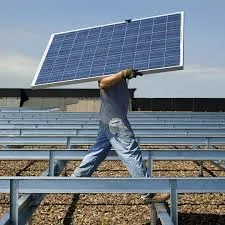solar panel cost
Understanding Solar Panel Cost A Comprehensive Guide
As the world becomes increasingly aware of the impacts of climate change and the need for sustainable energy solutions, solar energy has emerged as a popular and effective alternative. However, when considering the switch to solar power, one of the most pressing questions for many homeowners and businesses is, “What is the cost of solar panels?” This article provides a detailed overview of the factors influencing solar panel costs, the potential savings, and the long-term benefits of investing in solar energy.
Initial Investment
The average cost of solar panel installation can vary significantly based on several factors, including the size of the system, type of solar panels chosen, installation costs, and geographic location. As of late 2023, the average cost of solar panels ranges from $15,000 to $30,000 before any applicable tax credits or incentives. The cost per watt of installed solar power typically falls between $2.50 and $3.50, with most residential systems averaging around 5 to 10 kilowatts.
Components of Solar Panel Cost
1. Solar Panels The type of solar panels you choose has a considerable influence on the overall cost. Monocrystalline panels, known for their efficiency and sleek appearance, tend to be more expensive. Polycrystalline panels are more affordable but generally less efficient. Thin-film solar panels are another option, often the most cost-effective, but with lower efficiency and shorter lifespans.
2. Inverter The inverter converts the direct current (DC) electricity produced by the solar panels into alternating current (AC) electricity, which is used in most homes. The type and quality of the inverter can affect the total cost; string inverters are commonly used for residential installations, while microinverters and power optimizers can improve efficiency but may come with a higher price tag.
3. Installation Costs These can vary based on the complexity of the installation and labor costs in your area. On average, installation can account for 10% to 20% of the total system cost. Engaging a reputable solar contractor is essential to ensure proper installation and adherence to local building codes.
4. Additional Components Many solar systems will also include mounting equipment, wiring, and sometimes battery storage solutions. Adding battery storage can increase your initial investment significantly but provides added benefits of energy independence and storage for nighttime or poor weather use.
solar panel cost

Financial Incentives and Savings
One of the most significant benefits of investing in solar energy is the potential for substantial financial savings over time. Federal tax credits, such as the Investment Tax Credit (ITC), can reduce the upfront cost significantly. Currently, homeowners can deduct a percentage of their solar system installation costs from their federal taxes, making solar power more accessible.
In addition to federal incentives, many states offer their incentives, rebates, or utility programs that can further reduce the overall cost. These financial incentives can help recovering the initial investment faster, often allowing for a return on investment (ROI) within 5 to 10 years, depending on energy costs and local programs.
Long-Term Benefits
Investing in solar energy brings numerous long-term benefits beyond financial savings. Solar panels can increase the value of your property, making it more attractive to potential buyers. As energy prices continue to rise, generating your electricity can protect you from volatile energy costs.
Moreover, solar energy contributes positively to the environment. By transitioning to solar power, you can reduce your carbon footprint and dependence on fossil fuels, contributing to a healthier planet and promoting sustainable living.
Conclusion
Understanding solar panel costs is crucial when considering an investment in solar energy. While the initial outlay can seem significant, the long-term savings and environmental benefits make it a compelling option for many homeowners and businesses. As technology advances and the demand for renewable energy grows, solar energy is expected to become even more affordable, making it an increasingly viable option for those looking to embrace clean energy solutions. With various financial incentives available, now may be the perfect time to consider making the switch to solar power.
-
String Solar Inverter: The High-Efficiency Solution for Smart Solar EnergyNewsJul.14,2025
-
Revolutionizing Rooftop Energy with the Power of the Micro Solar InverterNewsJul.14,2025
-
Power Independence with Smart Off Grid Solar Inverter SolutionsNewsJul.14,2025
-
On Grid Solar Inverter: Powering the Future with Smart Grid IntegrationNewsJul.14,2025
-
Monocrystalline Solar Panels: High-Efficiency Power for the Future of Clean EnergyNewsJul.14,2025
-
Bifacial Solar Panel: A Smarter Investment for Next-Generation Energy SystemsNewsJul.14,2025







